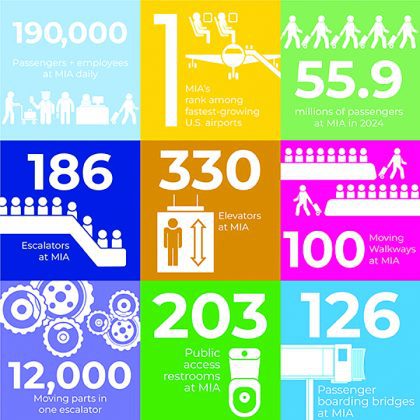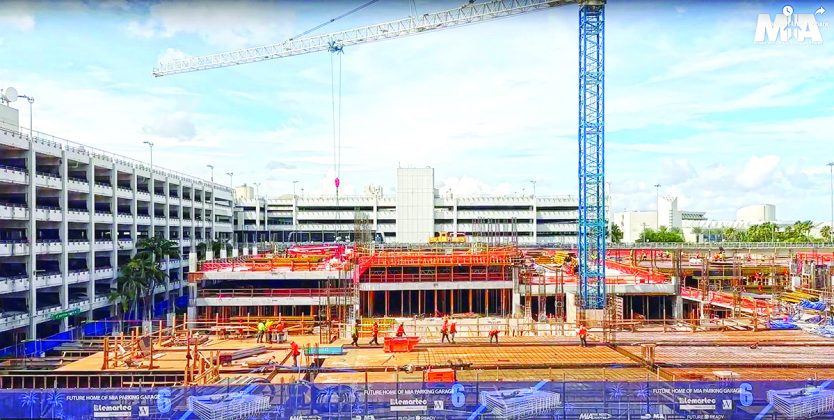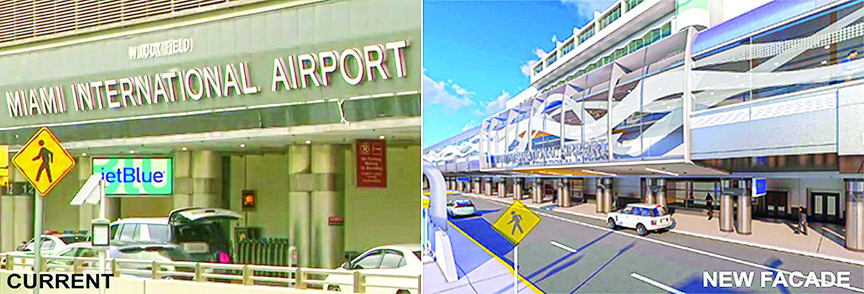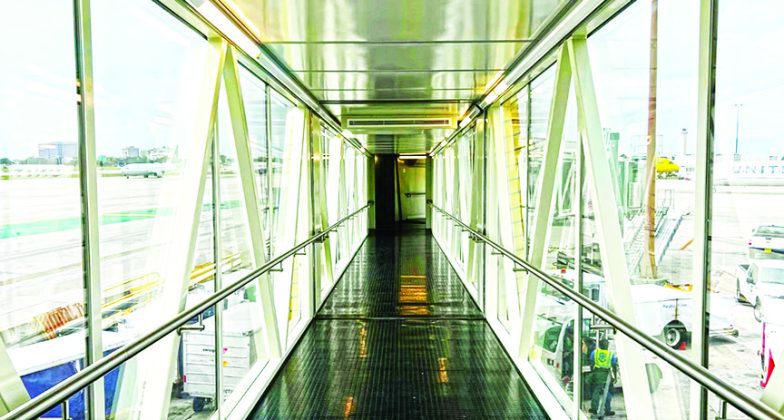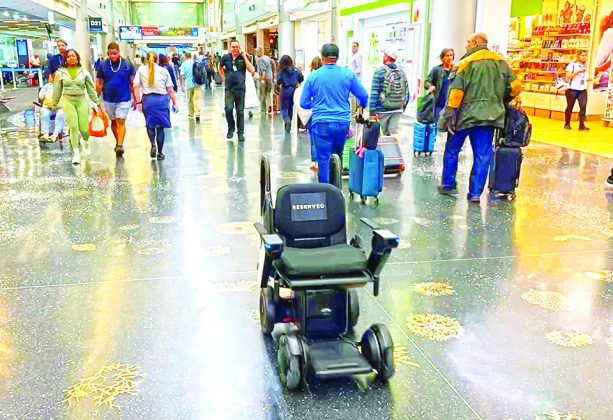|
Getting your Trinity Audio player ready...
|
If you’ve flown through Miami International Airport (MIA), chances are you have a story — and it’s probably a mixed one. We all share a love-hate relationship with MIA. It’s a vital international hub, offering flights to nearly every corner of the world, yet it’s equally famous for frustrating experiences that test even the most patient traveler.
When Pan American Field opened in 1928, it was nothing short of revolutionary. As the nation’s first airport terminal built solely for passenger service, it set a new standard. Constructed of reinforced concrete, the terminal boasted large windows at each end, a soaring domed ceiling, and a second-floor balcony overlooking the waiting rooms. Miami’s original air gateway was truly ahead of its time, featuring separate lounges for arriving and departing travelers, along with offices, a restaurant, pilot facilities, customs, immigration, and public health services.
Fast-forward nearly a century, and the story is more complicated. Today, Miami International Airport — still bearing the historic 1959 “Wilcox Field” name on an exterior sign — is seen by many as lagging behind the world’s premier airports. The apparent ‘patch and go’ method of expansion can no longer keep pace with modern demands.
In 2024, MIA handled a record-breaking 56 million passengers and 3 million tons of cargo.
It was a landmark year, and with it came growing urgency for transformation. That same year, Miami-Dade County Mayor Daniella Levine Cava launched two major initiatives: the Modernization in Action (M.I.A.) Plan — a sweeping $9 billion redevelopment effort over the next 10–15 years — and the I AM MIA program, which trains employees to deliver world-class customer service to enhance the passenger experience, one traveler at a time. “The airport needs some love,” said Mayor Levine Cava. “It needs a facelift. It needs modernization.”
Already, significant improvements are underway. MIA has renovated 33 conveyance units (escalators, elevators, walkways), 48 restrooms, and 32 boarding bridges — two of which are now made of energy-efficient glass. With the positive feedback from those two, plans are now in place to replace every boarding bridge with glass, aiming to reduce the claustrophobic feeling many passengers experience.
Operational efficiency is also improving: 95% of MIA’s 616 conveyance units are now functional, a sharp increase from 85% a year ago. Another 30 escalators, elevators, and walkways are scheduled for modernization in 2025. A new Lightning Crew can now handle burned out lightbulbs, dirty floors and other maintenance issues without bureaucratic scheduling delays.
Among the big-ticket projects: the Ibis Garage, a new 2,240-space parking structure with 50 EV charging stations is set to open by the end of 2025, adding 25% more capacity; a $350 million, 546-room Westin MIA Hotel is also set to break ground this summer at the entrance to MIA and be completed in 2027; and a $750 million Concourse K expansion that will add six new gates to the South Terminal by 2029.
Travelers can also look forward to cutting-edge technology. MIA is rolling out AI-driven signage that interacts with smartphones to provide personalized, multilingual wayfinding throughout the airport. And, it’s the first U.S. airport to deploy autonomous wheelchairs, offering greater mobility assistance when traditional services are stretched.
When it comes to getting to and from MIA, innovation is coming as well. We already have Tri-Rail and Brightline terminating at the rental car center (MIC) and the free MIA Mover to get people to the airport from there. Looking ahead, MIA is poised to embrace future modes of travel. Director and CEO Ralph Cutié recently revealed plans for vertiports — sites for electric vertical takeoff and landing vehicles (eVTOLs) that could shuttle passengers to destinations like Naples or Key West. Pending FAA approval, these futuristic transport hubs could soon become a reality.
Security improvements are on the radar too, with plans to consolidate TSA checkpoints into a central processing area with more equipment and personnel. “Saving even a minute for each of our 56 million passengers creates exponential improvements,” says Cutié. Already boasting the sixth-best TSA wait times nationally, MIA is aiming for the top spot.
Beyond passenger services, MIA’s importance to the local economy is staggering. The airport generates a $118 billion economic impact statewide and supports over 700,000 jobs. It also ranks sixth globally for cargo transport — with 91% of flowers imported into the U.S., valued at $1.6 billion annually, arriving through MIA.
From its groundbreaking beginnings to an ambitious future, Miami International Airport is once again ready to lead — and this time, it’s setting its sights sky-high.
Real Estate Update
As of 5/7/25, there were 179 properties for sale in Pinecrest, 13 homes pending sale and 11.2 months of inventory (buyer’s market). If you’re ready to move, contact me to get the best local expertise, truthful guidance and realistic expectations. It’s easy to get started at miamihal.com/getstarted. I invite you to view past episodes of my The MiamiHal Real Estate Show at miamihal.com/the-miamihal-real-estate-show to hear from experts and get the latest real estate news.
Hal Feldman (MiamiHal) is a Realtor with RE/MAX Advance Realty. You can contact him with your story ideas or real estate questions at www.MiamiHal.com, Hal@MiamiHal.com or www.facebook.com/MiamiHal
ABOUT US:
For more Miami community news, look no further than Miami Community Newspapers. This Miami online group of newspapers covers a variety of topics about the local community and beyond. Miami’s Community Newspapers offers daily news, online resources, podcasts and other multimedia content to keep readers informed. With topics ranging from local news to community events, Miami’s Community Newspapers is the ideal source for staying up to date with the latest news and happenings in the area.
This family-owned media company publishes more than a dozen neighborhood publications, magazines, special sections on their websites, newsletters, as well as distributing them in print throughout Miami Dade County from Aventura, Sunny Isles Beach, Miami Beach, Coral Gables, Brickell, Coconut Grove, Pinecrest, South Miami, Kendall, Palmetto Bay, Cutler Bay and Homestead. Each online publication and print editions provide comprehensive coverage of local news, events, business updates, lifestyle features, and local initiatives within its respective community.
Additionally, the newspaper has exclusive Miami community podcasts, providing listeners with an in-depth look into Miami’s culture. Whether you’re looking for local Miami news, or podcasts, Miami’s Community Newspapers has you covered. For more information, be sure to check out: https://communitynewspapers.com.
If you have any questions, feel free to email Michael@communitynewspapers.com or Grant@communitynewspapers.com.



